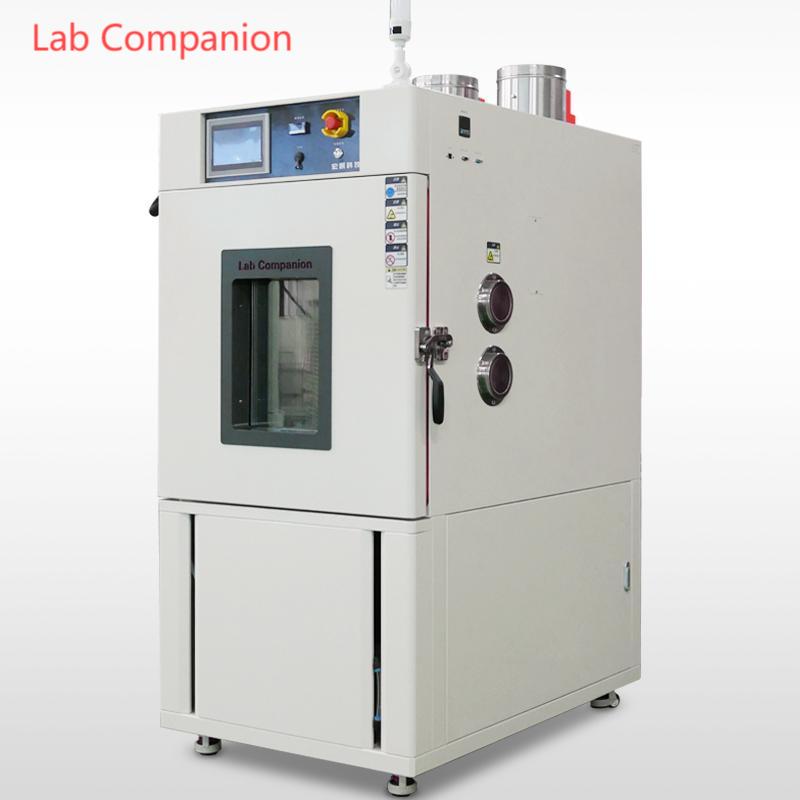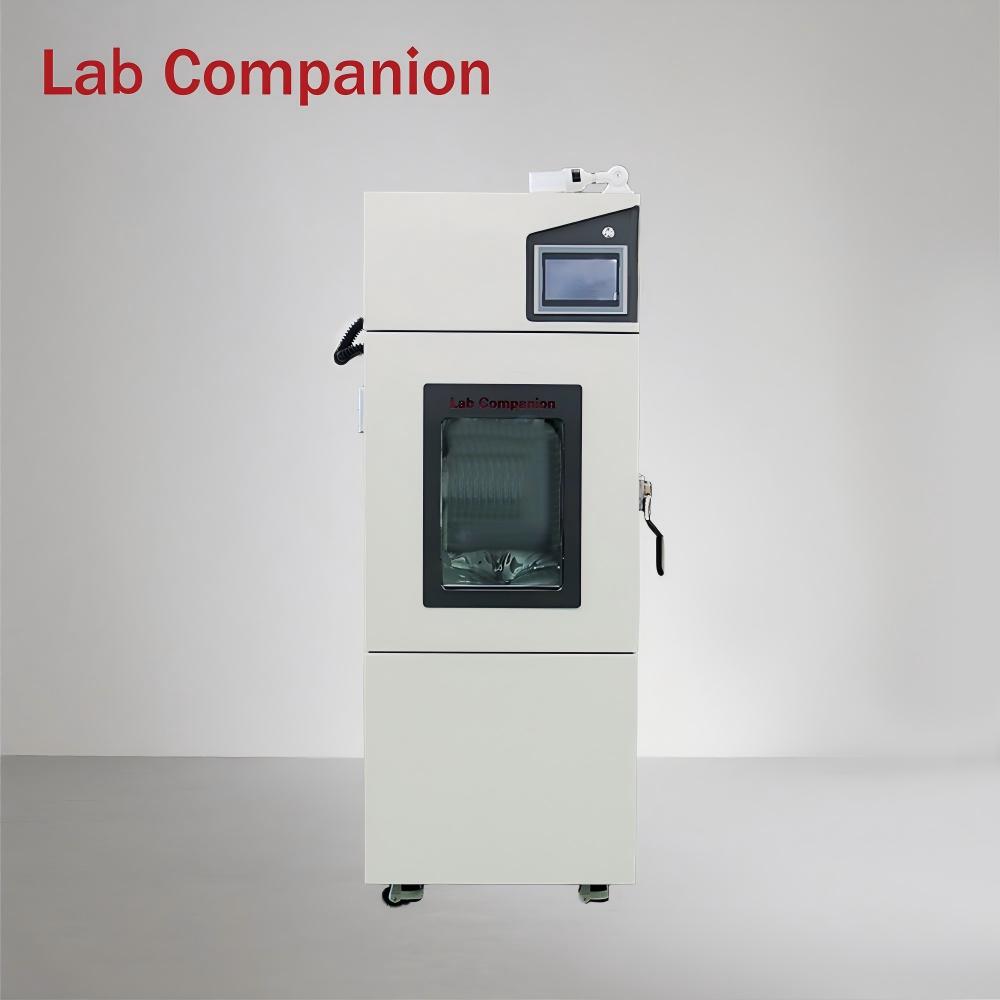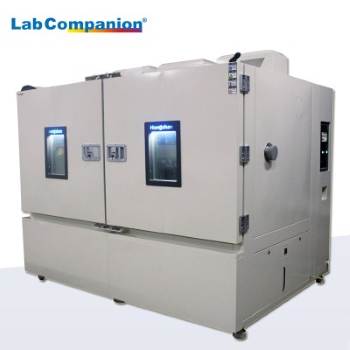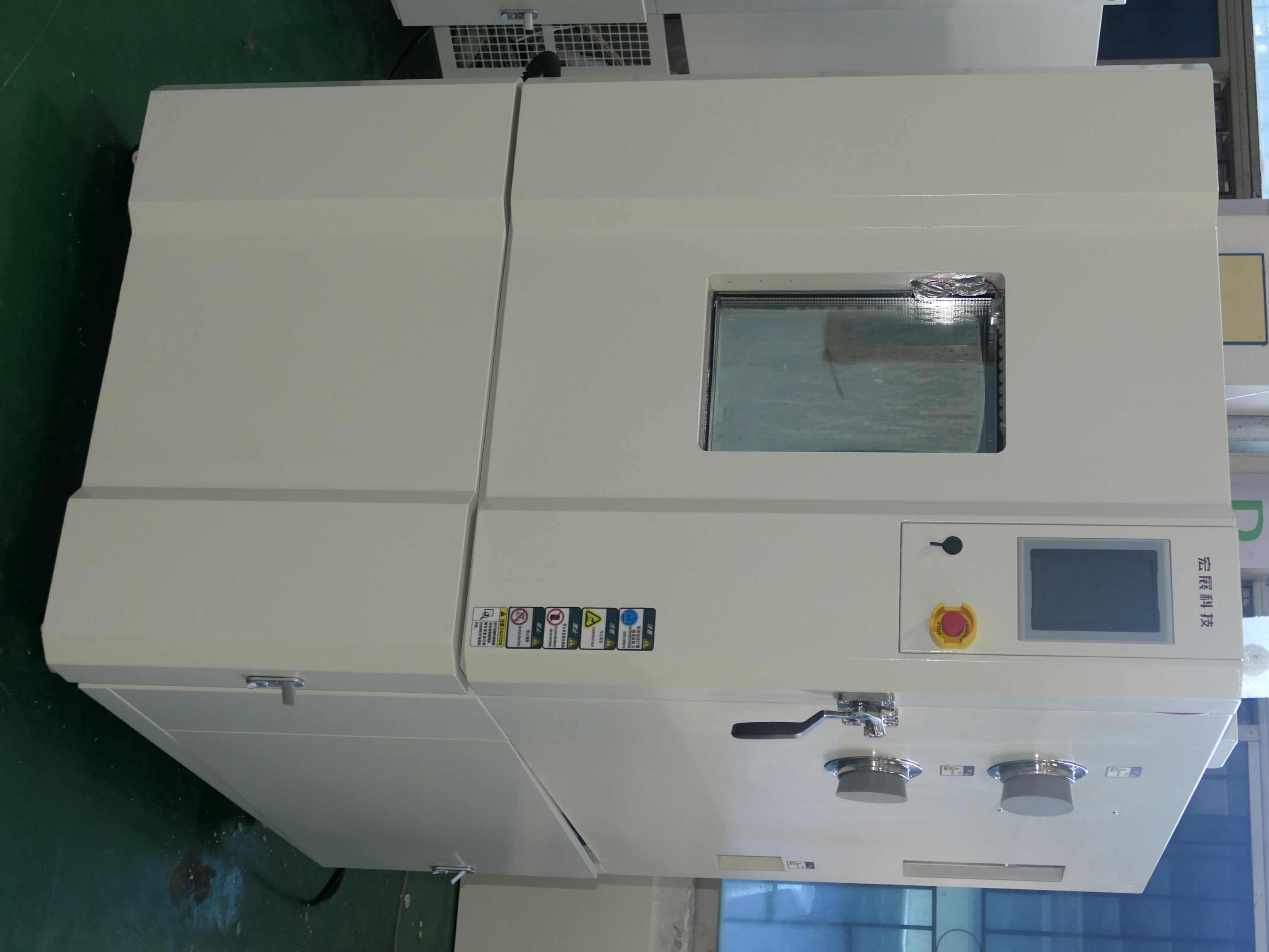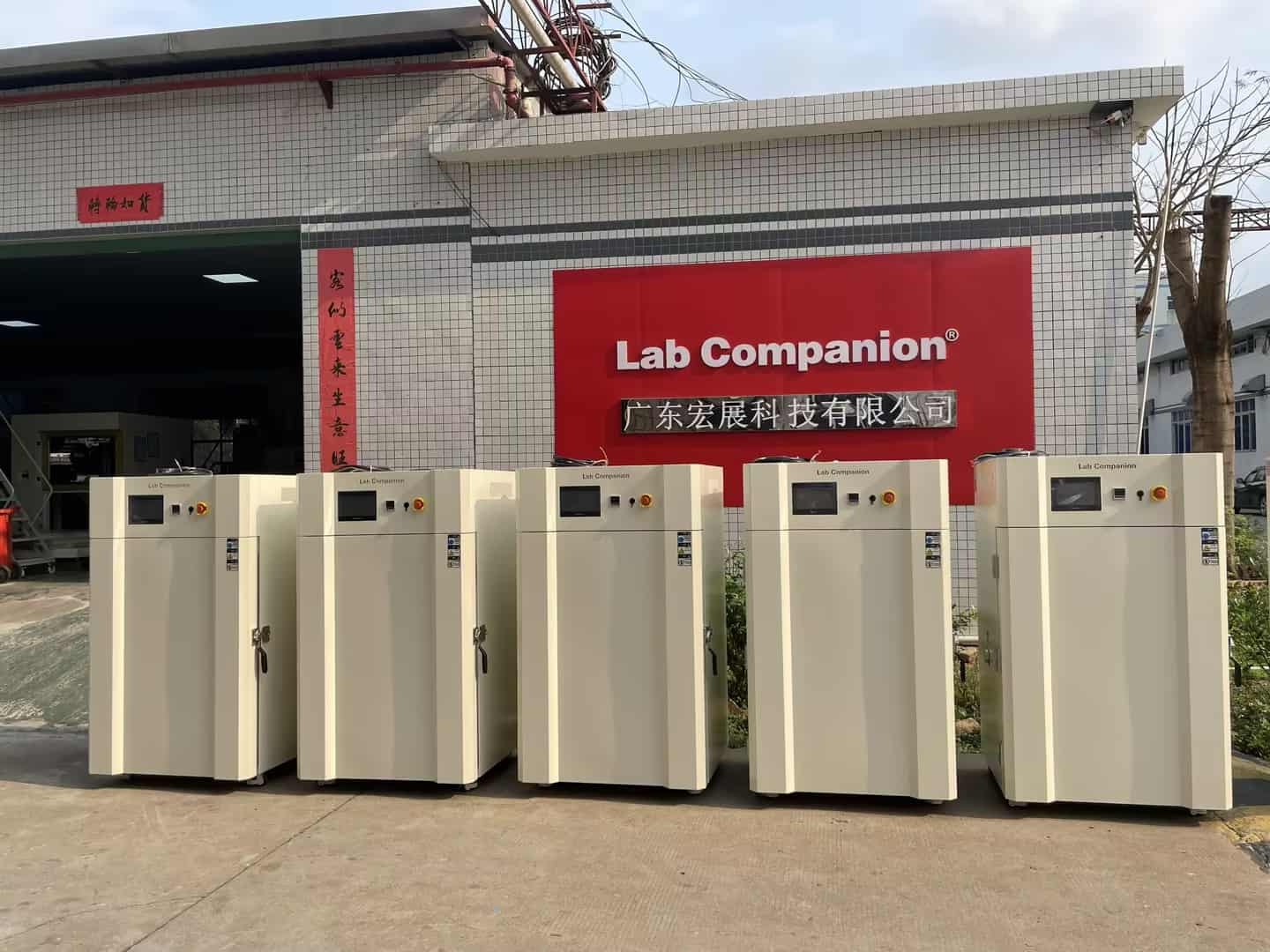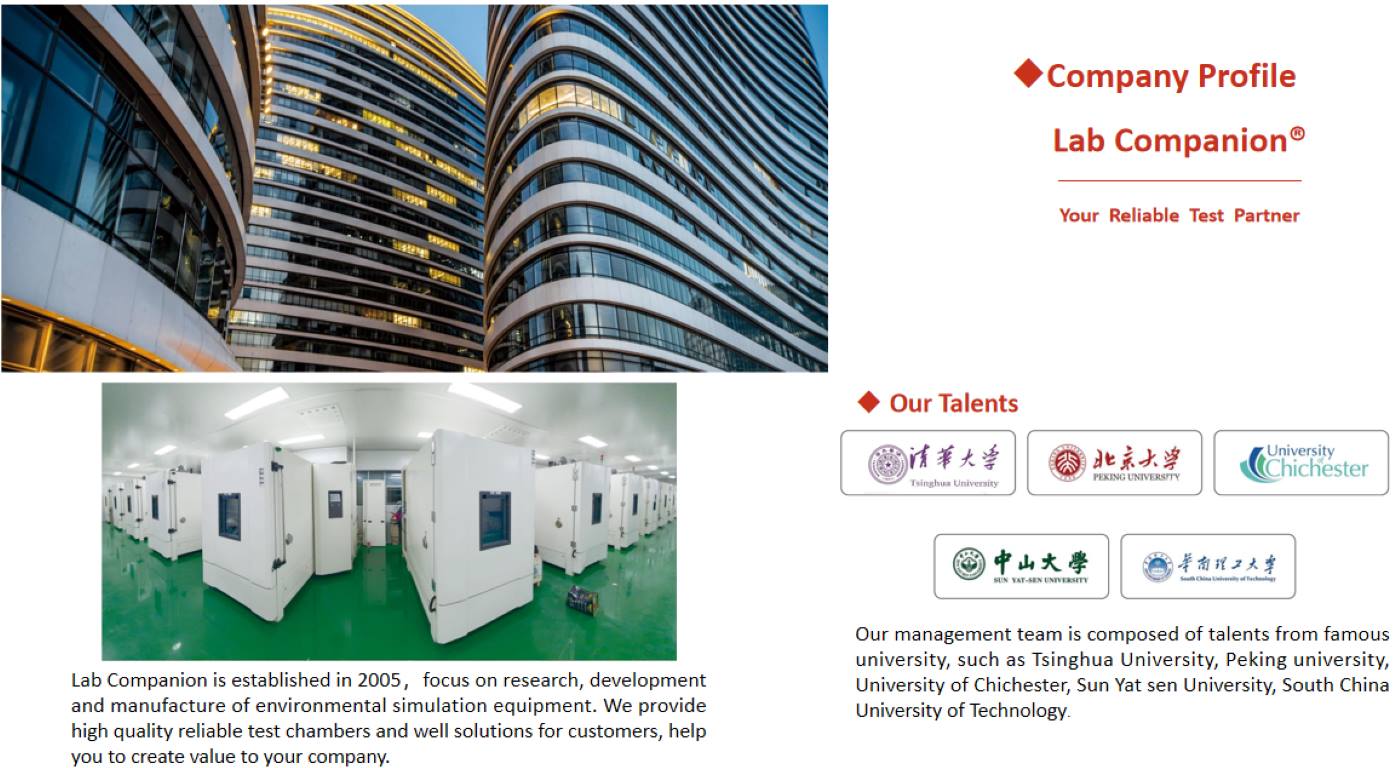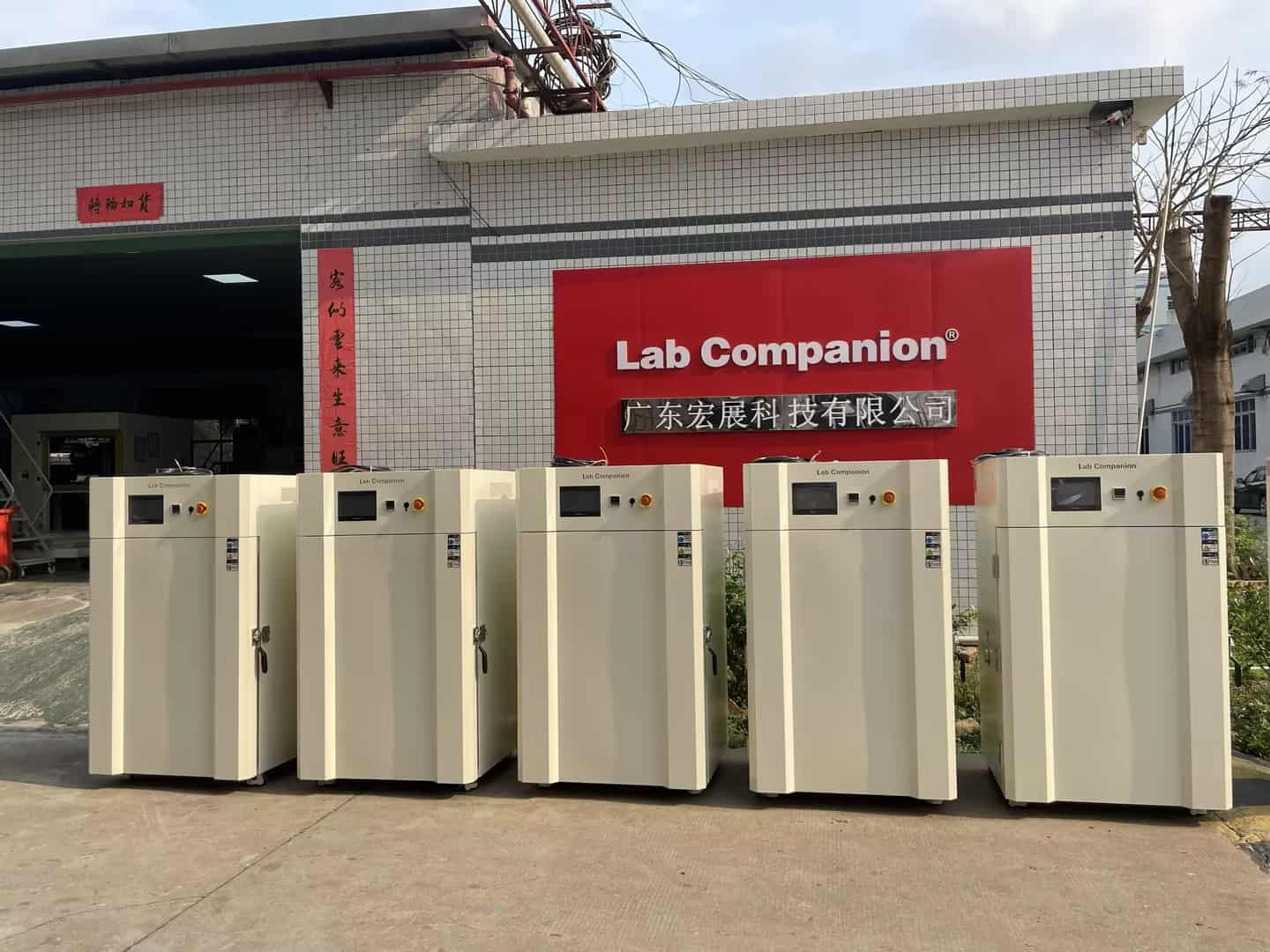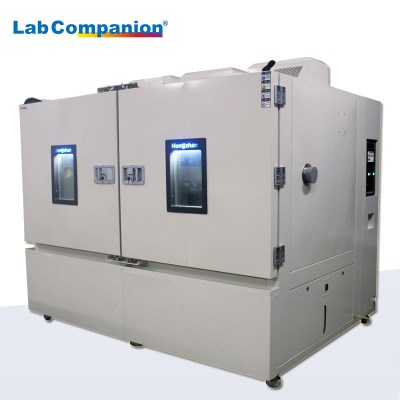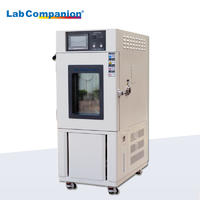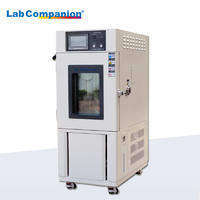Maintenance Tips for High and Low Temperature Test Chambers
Nov 07, 2025
Proper maintenance is key to stable operation and long life of high and low temperature test chambers (manufactured by Lab Companion—Guangdong Hongzhan Technology with 20 years of expertise). Before cleaning/maintenance, remove internal impurities first.
1. Exterior Cleaning
Cabinet & Control Panel: Wipe with clean soft cloth; use neutral detergent for stubborn stains.
Notice: Avoid corrosive chemicals.
Power Cord & Plug: Inspect regularly for wear/cracks.
Notice: Replace damaged parts promptly to prevent electrical risks.
2. Internal & Accessory Maintenance
Filters: Check and replace regularly (based on usage) to block dust and avoid performance issues.
Water Tank & Pipes: Replace water and clean interior regularly.
Notice: Use purified/distilled water to prevent scale/bacteria.
Exhaust Fan: Inspect insulation and air duct blockages.
Notice: Clean every 6 months to ensure heat dissipation.
Temp & Humidity Sensors: Verify function periodically, and clean/replace if faulty to avoid test result errors.
Power Distribution Room: Vacuum dust annually to protect electrical components.
Power Distribution Box Panel: Wipe with dry cloth monthly; never use wet cloth to prevent short circuits.
3. Operating Environment
Placement: Install in dry, well-ventilated area.
Notice: Avoid direct sunlight, high temp/humidity.
Working Parameters: Operate within designed temp/humidity range.
Notice: Avoid overloading to prevent damage.
4. Performance Testing & Calibration
Performance Testing: Test regularly, compare with standard equipment for accuracy.
Calibration: Calibrate sensors/controllers periodically (at least annually, based on usage) for precision.
5. Record-Keeping & Operation
Establish maintenance records for troubleshooting.
Notice: Assign dedicated staff; follow guidelines to avoid unauthorized/improper use.
Follow these tips to maximize your chamber's performance and lifespan for reliable lab/industrial results.
For more advice or inquiries, contact Lab Companion—your trusted environmental test equipment partner.
続きを読む


